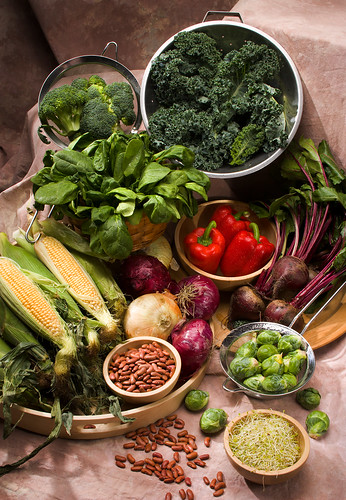
In the United States, 31 percent of the available food supply in 2010 went uneaten. The estimated value of this food loss was $161.6 billion using retail prices.
This post is part of the Science Tuesday feature series on the USDA blog. Check back each week as we showcase stories and news from USDA’s rich science and research portfolio.
We’re all fortunate to live in a country that has one of the most productive and efficient food production systems in the world. The United States produces over 430 billion pounds of food each year. However, nearly a third of the food produced by farmers goes uneaten, representing $161.6 billion. That’s enough food waste to fill 44 Sears Towers every year. To meet this challenge, USDA scientists are developing innovative programs and using cutting-edge research to reduce food waste on the farm, on supermarket shelves, and in the home.
So where is food being lost? It is difficult to measure exactly how much food people, retailers, and restaurants are throwing away without going through everyone’s garbage, so USDA’s Economic Research Service (ERS) developed the Loss-Adjusted Food Availability Data (LAFA) Series, which gives a proxy for consumption and loss for over 200 types of food at the retail and consumer levels.
Food can also be lost on the farm when farmers don’t have adequate storage facilities to hold their freshly harvested food. In August 2015, USDA expanded the Farm Storage Facility Loan Program to provide low-cost loans for on-farm storage facilities for all kinds of farmers. This helps the food from being damaged by pests, pathogens, and weather so that more can reach store shelves.
But the story doesn’t end there. USDA scientists are also working on ways to keep foods from going bad when they are on grocery store shelves, for example by increasing fresh-cut vegetable shelf-life. The scientists looked at 50 types of commercially available peppers to identify the most promising candidates for future breeding projects. They chose peppers that were most resistant to fluid leakage after being cut, which leads to the peppers staying firmer longer and reduces the chance of microbial growth. USDA scientists also found genetic markers in lettuce that could enable cut lettuce to stay fresh for a month instead of wilting after just a week or two.
Even safe, quality, and good-looking foods may go to waste if a “sell-by” or “best-by” date is passed. That’s why USDA’s Food Safety and Inspection Service recently updated its safe-storage and date-labeling information and, in partnership with the Food Marketing Institute and Cornell University, launched a FoodKeeper App to help consumers figure out when a food that’s past its labeled “sell by” date may still be perfectly safe to eat.
Through economic modeling, targeted financial investments, translational research, and consumer tools, USDA is committed to reducing food waste with integrated, innovative programs throughout the Department.
No comments:
Post a Comment
Note: Only a member of this blog may post a comment.